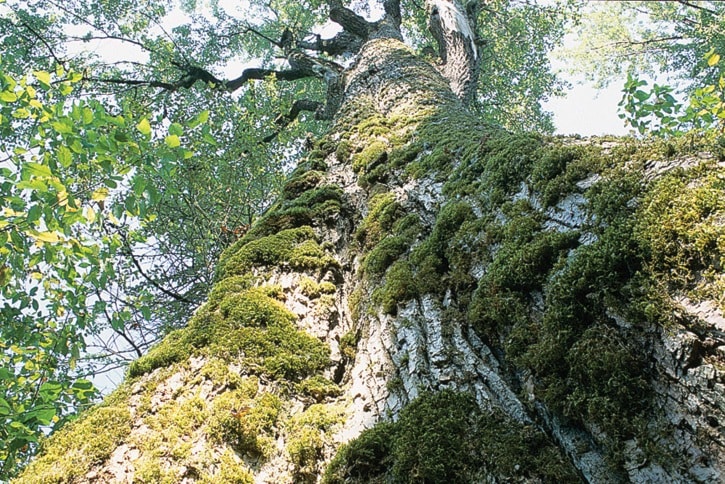No, it is not snowing; those fluffy white balls floating in the air are the delicate seeds of the black cottonwood tree.
Tall, fragrant and fast-growing, cottonwoods are trees of the wetlands. They tolerate standing water and can grow abundantly on floodplains.
In the Lower Mainland, they are often found along rivers and streams and in freshwater marshes.
Once the soft fluff floats to the ground, the seed it carries sinks into the soil. Saplings soon sprout in sunny locations and the tree will make fast progress, reaching 60 metres tall in optimum conditions.
The bark starts off smooth, but as the tree ages it turns pale grey and becomes deeply furrowed.
The black cottonwood is a tree that inspires strong sentiments: love it or hate it.
For some, the rich, resin smell of the buds and young leaves is evocative of the west, and walking among cottonwoods is a delight at any season.
For others, fear of the tree’s reputation as a dangerous limb dropper and its propensity for distributing its catkins and seeds far and wide, are enough to bring demands for its removal from public areas.
Yet cottonwoods create an important habitat; without them, many species would lack food and shelter.
Insects attracted to the fragrant scent of the buds feed many songbirds, including northbound migrants and nestlings in spring. The green, deciduous leaves screen many warblers and vireos foraging in the upper branches. Insects drop into the streams and rivers that the great trees shade, providing food for juvenile salmon and other fish in the shallows below.
Cottonwoods are also habitat for beautiful western tiger swallowtail butterflies.
The trees mature fast but are relatively short-lived. As branches break off, cavities and snags are created which provide perfect nesting and denning holes for great horned owls, wood ducks, downy woodpeckers, northern flickers, tree swallows, squirrels and bats.
Margaret Stewart recorded as many as 50 ruffed grouse perched in a local cottonwood tree in the 1890s.
The grouse was then a common bird of the Boundary Bay lowlands; it would be a very rare sight today.
Riparian – or river-side – vegetation is very important for stabilizing the banks of rivers, and keeping water clean, cool and rich in life. Black cottonwoods are among the largest of riparian trees, which also include birches and alders.
Admire their shimmering leaves from a distance (especially on a windy day), breath in their fragrant scent, and enjoy the life among their branches.
Anne Murray, the author of two nature books available in local book stores, writes monthly in the Peace Arch News – www.natureguidesbc.com
